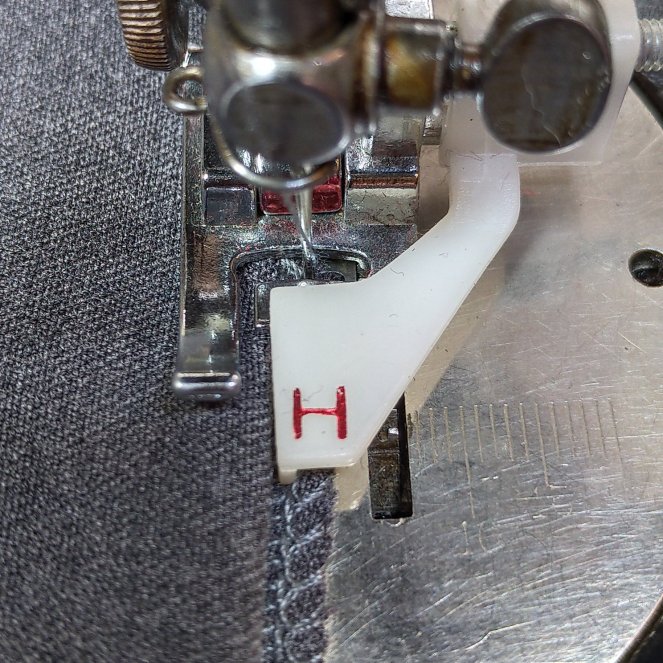…is plain zig-zag.
Why? Because it resembles manual blind hem most closely, and manual blind hem is, of course, the golden standard.
Domestic sewing machines have come up with a variety of special blind hem stitches, from a wiggling attachment for straight stitch only machines, to fixed or programmable combinations of straight stitching or narrow zig-zag with a deep zig-zag every now and again.
Industrial sewing machines however do nothing of the sort. There is a special machine – the blind hemmer – that uses a curved needle to pick up a strand or two of the main fabric, on every stitch. As you would do by hand.
My preferred blind hem method is to overlock the raw edge first and then sew blind hem as you usually would on a sewing machine, but to use plain zig-zag.
I use a fairly narrow zig-zag (only 2.5-3mm) and make it quite spaced out with a stitch length of also 2.5-3mm. This helps to avoid curling of the edge and allows to work it in a bit when making curved hems. I use a blind hem foot to help align the hem.

If you set the needle left, you can vary zig-zag width between fabrics without the need to change the setting of your blind hem foot. 😉
As you see there, I stitch very close to the edge, may be even on the edge in order to avoid having a wide seam allowance flapping above the blind stitches. Just as you would do by hand…

This makes neat little stitches barely visible on the other side. As usual, the trick with machine-sewn blind hem is to catch as little of the fabric as possible. This means that you cannot catch them all and some stitches are missed. If you already have a rather long distance between the blind stitches sewn with the special blind stitch available on many machines, and you miss one stitch, then suddenly you have a long stretch of hem hanging loose. But with zig-zag the stitches are close-spaced, so it is not a problem at all if you miss a stitch here and there.
Obviously, not every fabric is suitable for machine-sewn blind hem. Sometimes you just have to go manual for a decent result. The usual problem is a sharp crease produced by the foot pressing hard on the fold of your main material.

This gabardine is a borderline case. The stitches do disappear in the texture of the material but the crease line is quite prominent, despite a low foot pressure. The crease can usually be sorted with ironing through a damp cloth, which is not the same as ironing with a steam iron without a cloth.
Happy sewing! 😁
I’d never really thought about using a plain zigzag for hemming before but you make a very persuasive case! I’m going to try it.
LikeLike
Good luck! 🙂
LikeLiked by 1 person